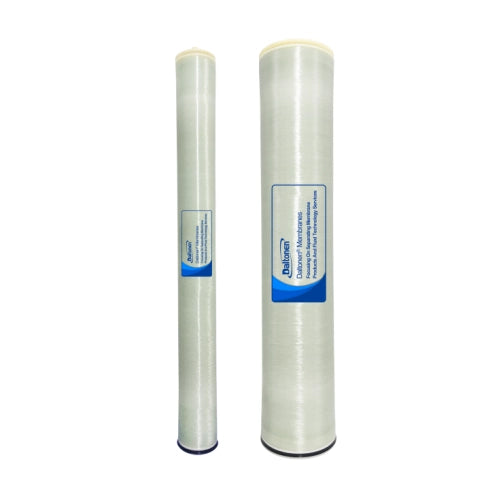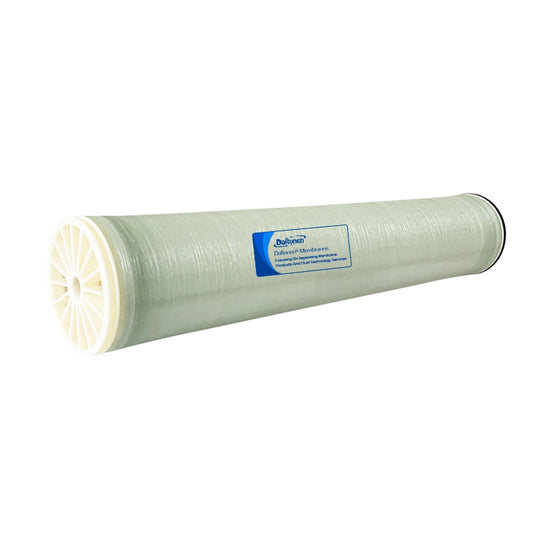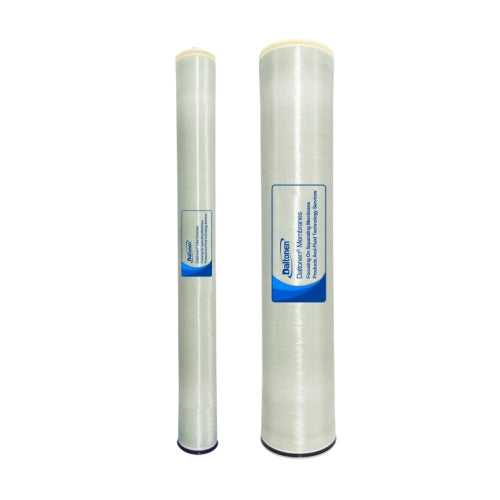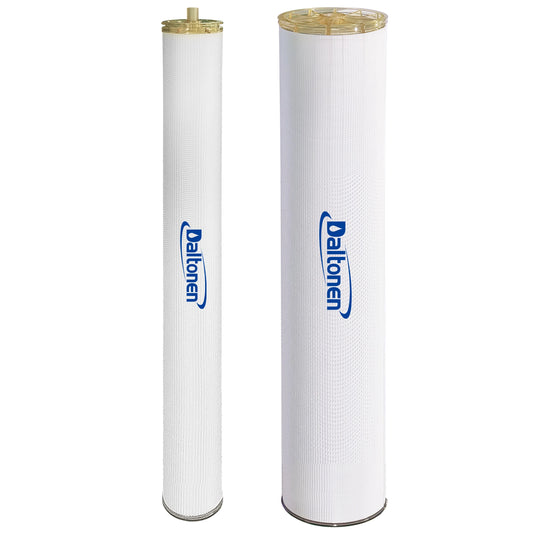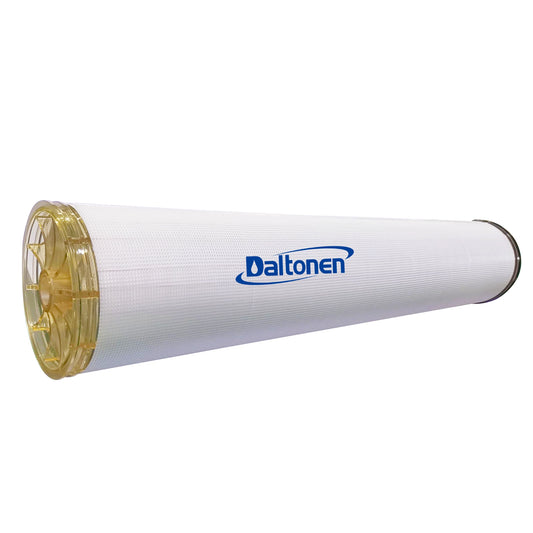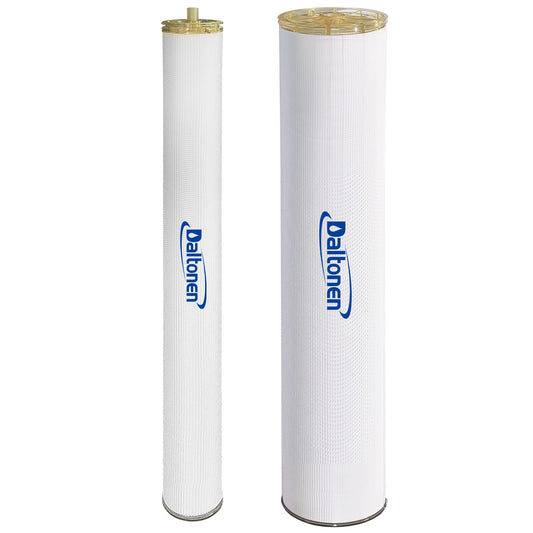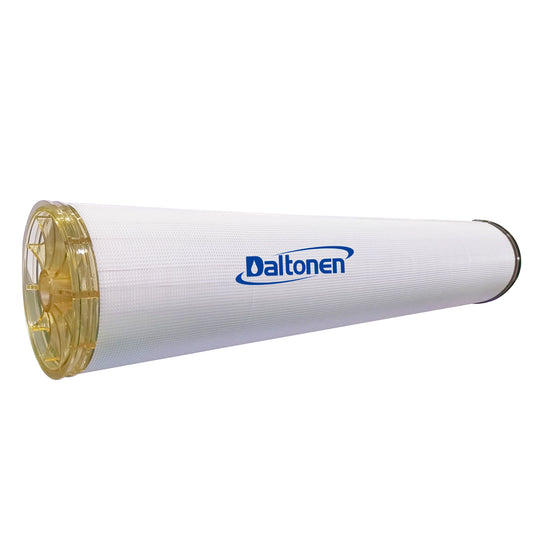ceramic reverse osmosis membrane process design for industrial water treatment
01 Aug 2025
Project Overview
- Feedwater Source: Municipal recycled water/surface water (TDS: 500-3,000 mg/L, COD≤30 mg/L)
- Product Water Standard: High-purity industrial water (e.g., electronic grade: TDS≤10 mg/L, SiO₂≤0.1 mg/L)
- Core Process: Ceramic Ultrafiltration (UF) + Ceramic Reverse Osmosis (RO)
-
Ceramic Membrane Advantages:
→ Resistant to strong acids/bases/oxidants (pH 0–14, tolerates NaOCl)
→ High-temperature tolerance (≤120°C)
→ Strong antifouling properties, lifespan ≥15 years (vs. 5–7 years for polymeric membranes)
Process Flow Diagram
graph LR
A[Feedwater Tank] --> B[Pretreatment System]
B --> C[Ceramic Ultrafiltration UF]
C --> D[Intermediate Tank]
D --> E[Ceramic Reverse Osmosis RO]
E --> F[Product Water Tank]
F --> G[Post-Treatment]
E --> H[Concentrate Recovery]

I. Core Process Unit Design
1. Pretreatment System (Critical Protection Layer)
| Unit | Parameters | Function |
|---|---|---|
| Multi-media Filter | Quartz sand + activated carbon, filtration rate 10 m/h | Remove SS/colloids/chlorine residual |
| Self-cleaning Strainer | 50 μm precision | Protect ceramic membranes from hard particle abrasion |
| Antiscalant Dosing | Polycarboxylates, 1–5 ppm | Inhibit CaCO₃/CaSO₄ crystallization (lower scaling risk) |
| pH Adjustment | H₂SO₄ or NaOH, pH 6.5–7.5 | Optimize RO flux |
Note: Despite antifouling properties, pretreated water must meet SDI₃ ≤ 4.
2. Ceramic Membrane System (Dual-Barrier Design)
| Parameter | Ceramic UF | Ceramic RO |
|---|---|---|
| Membrane Material | α-Alumina (Al₂O₃) | TiO₂ composite layer |
| Pore Size/Rejection | 50 nm (MWCO: 100 kDa) | Salt rejection ≥99.5% (NaCl) |
| Operating Pressure | 0.1–0.3 MPa | 1.5–4.0 MPa (20% lower than polymeric membranes) |
| Recovery Rate | ≥95% | Single-stage: 85% (concentrate TDS ≤15,000 mg/L) |
| Cleaning Method | 0.5% HNO₃ + 0.1% NaOH | 0.1% NaOH + 200 ppm NaClO |
Innovations:
- Hot Water Backwash: Periodic 80°C backwash to remove organic fouling
- Concentrate Recycle: RO concentrate partially returned to UF feed to increase total recovery >90%
3. Post-Treatment System
- EDI (Electrodeionization): Further purification (TDS≤0.1 mg/L) for electronics/pharma
- UV Sterilization: 254 nm wavelength to eliminate microbial risks
- Nitrogen-sealed Tank: Prevent high-purity water recontamination
II. Equipment Specifications
| Equipment | Specifications | Qty |
|---|---|---|
| Ceramic UF Membranes | Flux 100 LMH, Φ25mm×1.2m | 40 elements |
| Ceramic RO Membranes | Output 1.5 m³/h/element, 6MPa | 120 elements |
| High-pressure Pump | Q=60 m³/h, H=400m, SS316L | 3 sets (2W+1S) |
| CIP Cleaning System | Acid/alkali tank + heater (80°C) | 1 set |
III. Smart Control & Energy Savings
-
AI Optimization:
- Real-time TMP & flux decay monitoring, auto-trigger optimized cleaning
- Dynamic adjustment of RO pressure/recovery based on feedwater quality
-
Energy Recovery:
- PX Pressure Exchanger on concentrate stream (≥95% efficiency), reducing energy to 0.8–1.2 kWh/m³
-
Zero Liquid Discharge (ZLD) (Optional):
- Concentrate sent to evaporator-crystallizer to recover industrial salts
IV. Economic Analysis
| Item | Ceramic Membrane System | Conventional Polymeric Membrane |
|---|---|---|
| Membrane lifespan | 15 years | 5 years (2–3 replacements) |
| Membrane cost/m³ | ¥0.6–0.8/m³ (¥0.6–0.8) | ¥0.9–1.2/m³ (¥0.9–1.2) |
| Energy consumption | 1.0 kWh/m³ | 1.5 kWh/m³ |
| Chemical cleaning cycle | Once/90 days | Once/30 days |
| Total operating cost | ¥2.2–2.8/m³ (¥2.2–2.8) | ¥3.0–3.8/m³ (¥3.0–3.8) |
Note: 30% higher initial investment for ceramics, but >25% lower 10-year TCO.
V. Special Scenario Solutions
-
High-COD Wastewater:
- Add catalytic ozonation (MnO₂/Al₂O₃ catalyst) to degrade macromolecules
-
High-Salinity/High-Hardness Water:
- Integrate NF (Nanofiltration) before RO to remove divalent ions
-
High-Temperature Feedwater (≥60°C):
- Direct feed into ceramic RO without cooling, boosting flux by 30%
Advantages Summary
- Extreme Tolerance: Compatible with acid/alkali cleaning, high-temperature wastewater, oxidative environments (e.g., chlorine-containing streams)
- Extended Lifespan: >15-year service life reduces replacements and downtime
- High Recovery Rate: Single-stage RO recovery up to 85%, minimizing waste brine
- Low Maintenance: 50% fewer cleanings, offline cleaning annually
Target Industries:
- Semiconductor manufacturing (chip rinsing water)
- Biopharma (water for injection)
- Thermal power (supercritical boiler feedwater)
- Chemical plant cooling cycles (high COC operation)
Recommended for complex feedwater and continuous-operation critical applications. ROI period: 3–5 years. Pilot testing essential to finalize membrane flux and cleaning protocols.
Tags:
